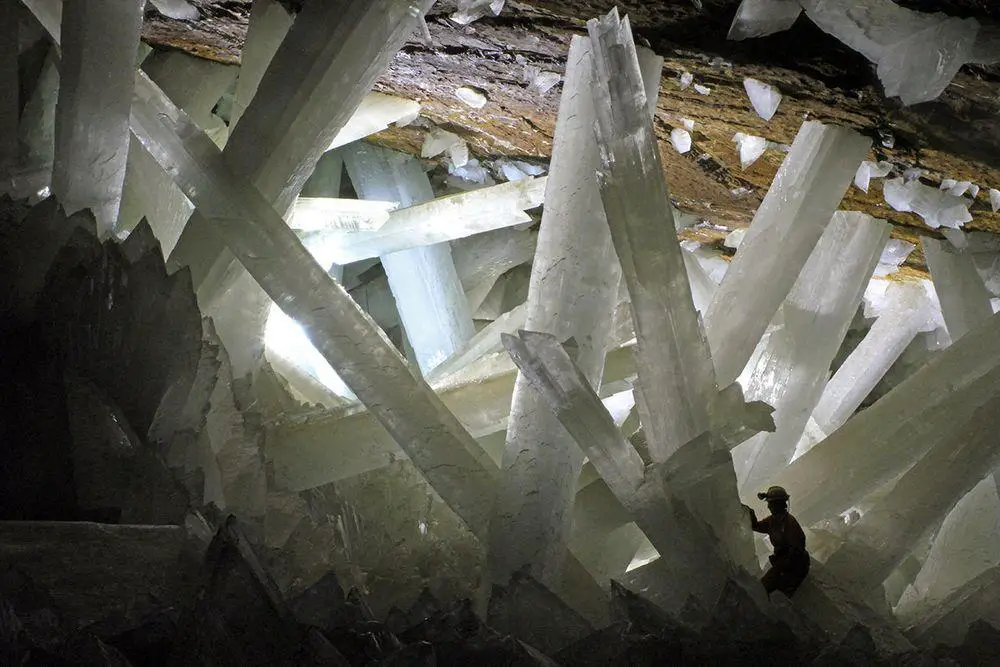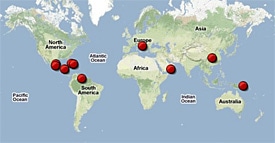World 🢖 North America 🢖 Caribbean 🢖 Bahamas
Sinkholes 🢔 Caves 🢔 Geological wonders 🢔 Categories of wonders
Wonder
Black Hole of Andros
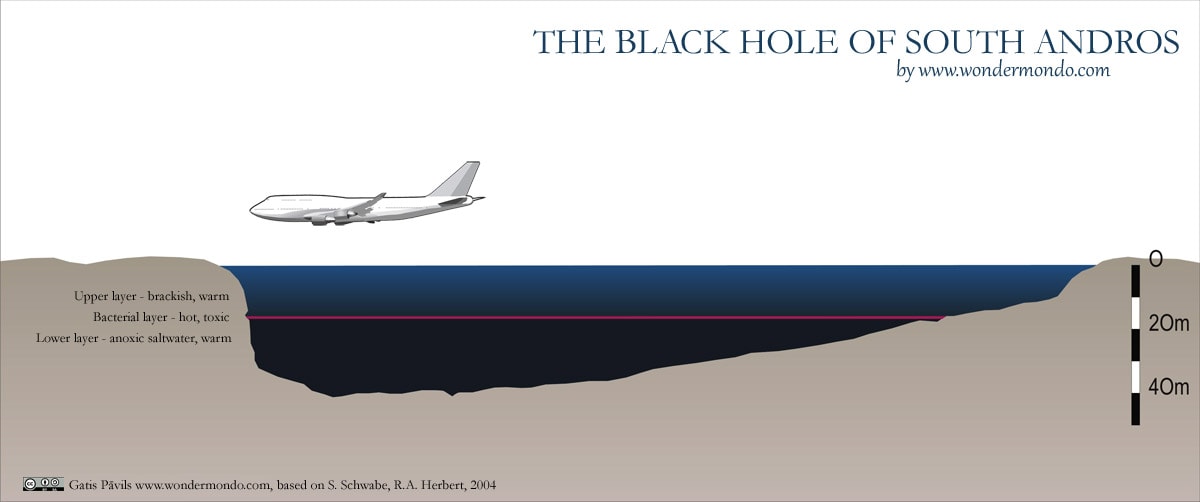
 In short
In short
Just some 100 kilometers away from the crowded city of Nassau with its highrise hotels there is nearly unexplored land with some of the most mysterious karst formations in the world – black holes.
The best known and the most impressive among them is the Black Hole of Andros (The Black Hole of South Andros).
 51.8%
51.8%
GPS coordinates
Location, address
Alternate names
Depth
Map of the site
If you see this after your page is loaded completely, leafletJS files are missing.
 In detail
In detail
Black holes of Bahamas
Phenomenon of black holes is a recent discovery and thus far they are known only in Andros and Grand Bahama islands in the Bahamas.
Only in 1985 from the airplanes in the South Andros Island there were noticed round holes filled with abnormally black water. Initially, these were considered to be meteorite craters.
Although this region is close to densely populated and affluent areas with numerous scientists and caving enthusiasts, only in late June 1999 there took place the first scientific expedition to the largest and most impressive of these holes – South Andros Black Hole. Only then it was discovered that these round, black lakes are unique, unprecedented natural formations.
Giant layer of carbonates
The Bahamas are the visible part of a giant "heap" of carbonate rock. For some 200 million years, since Jurassic times here have accrued limestone, aragonite, dolomite, and gypsum layers with total thickness exceeding 6 kilometers.
Interaction between the porous carbonate rocks and seawater has created countless, extensive cave systems, most of them still to be discovered and explored.
More common here are blue holes – beautiful, diverse, deep caves filled with seawater and lined with bright white carbonate sand. Light refraction here creates a crystal clear, beautiful blue color.
Formation of black holes
Today black holes are located in shallow, muddy flats. The layer of carbonate mud can be several meters deep, making these places unavailable by foot or boat. Low-lying mudflats have numerous inundated areas with shallow seawater and rainwater poodles, bays, and lakes.
Most likely similar conditions have lasted here for a long time. Sea level though has changed often – local mudflats over the last 1.8 million years some 30 times have experienced ascent and descent of sea.
At some locations the aggressive seawater started to dissolve the carbonate rock at the base of poodles, gradually forming round, rather deep holes. Thus, contrary to many sinkholes around the world, black holes have not formed from deeper layers to the top, but in the opposite direction – from the surface downwards. Most likely they are not linked to the sea and they do not have lateral passages.
Location and number of black holes
In total there are more than 30 black holes in the Bahamas. All of them except for one, are located on the largest island – Andros, especially in the southwestern and central part. One black hole is found in Grand Bahama.
Location of most black holes is not popularised – these unique monuments of nature easily could be endangered by random visitors, especially – by diving.
First dive in the black hole
In late June 1999 the most impressive black hole – the Black Hole of South Andros – was reached by a team of scientists and movie makers. Group was led by the experienced cave diver, lawyer, and geomicrobiologist Stephanie Schwabe.
Most likely this was the first time when humans reached this weird lake. Low-lying banks of Black Hole contained black, uninviting water.
There were made several tests throughout the whole depth of the lake, measuring several values. Turned out that the lake is layered with the oxygen-depleted layer below.
Nonetheless the first dive brought a great surprise. The dark waters turned out to be crystal clear and at the depth of more than 17 meters, there was visible something like a weird, muddy bottom.
As Stephie Schwabe lowered her hand in this mud, she jerked it back in surprise – it was hot! The disturbed surface of this fake bottom undulated like a jelly.
Schwabe just dived into this weird jelly (would you do this?). The hot, dark pink substance suddenly ended, and the diver reached the next layer – cool, crystal-clear water in total, absolute darkness.
Further descent continued into complete darkness until reaching the bottom. Return back to the surface, of course, required repeated passage through the unpleasant, hot jelly.
When divers returned back to the daylight, they gazed in surprise at all the metal parts of their equipment – everything, even a silver bracelet, was turned black.
Description of the Black Hole
The Black Hole of South Andros is a nearly perfectly round lake with a diameter of 270 – 310 m.
Thus far its measured maximum depth is 47 meters. In the southern part of the lake, the full depth is reached suddenly, and then, northwards the bottom gradually rises upwards. The banks of the lake are low.
Lake has three distinct layers of water.
Upper layer
The upper layer reaches a depth of 17.7 m. It is a fairly common waterbody – it consists of clear, lucid brackish water with 12 ‰ salinity. Water is very translucent, and even at the depth of 17.7 m, there is enough light.
Temperature of the water is common for these areas – 26° C. In this layer live some fish and zooplankton. The walls of the lake in this layer are covered with up to 0.5 m thick cover of algae.
Bacterial layer
At the depth of 17.7 – 19 meters there is located the most exotic feature of black holes – the bacterial layer. Similar layers have been found also in other black holes of the Bahamas, including the nearby Jacuzzi Black Hole.
This approximately 1 m thick layer contains a huge amount of phototrophic purple sulfur bacteria. These organisms basically need sulfur and light for their existence.
Elsewhere in the world there also is met purple sulfur bacteria and during the bloom, their number might become significant too. But these bacteria, in general, are located at shallower depths: 5 – 10 m. Perhaps in Andros, the water is very translucent and bacteria have the best circumstances at greater depth here.
Thus far in Andros Black Hole have been found several species of bacteria, belonging to Chromatiaceae family, Thiocapsa and Allochromatium genera. One endemic species – Allocromatium palmerii – has been described thus far.
Estimates show that the Black Hole of Andros contains some 5.6 tons of dry-weight of bacteria. The density of bacteria in a layer is more than 10 million living cells in a milliliter.
Water in the bacterial layer is acidic and contains more sulfides – while at the surface adicity is 8.6 pH, here it is 6.5 pH. The layer of microorganisms has left a trace – etching in the walls of the lake. This acidity also explains why the metal details turn here black.
The most unusual feature though is the rise of temperature. In the Bahamas, there is not met any volcanic heat and no geothermal water. The only explanation is that the heat has been created by microorganisms themselves.
Temperature of water here sharply increases from 29 °C to 36°C, and might reach even 40°C. At the 20 m depth, it returns back to 29 ° C.
Most likely this is the only known case in the world where microorganisms in nature significantly increase the temperature of the water. This heated water, in turn, provides a competitive advantage over other species that are not thermoresistant.
Heat is created by chemical reactions in cells where the excess light energy is turned into heat. Further increase in temperature is not expected – the amount of microorganisms here seems to be limited by a lack of sulfur.
Another factor helping to sustain this heated bacterial layer is extremely stable conditions in the lake. It is well possible that Stephi Schwabe was the first nuisance in this eternal bacterial stillness. We can be sure that many divers crisscrossing this layer would rather soon disrupt the balance.
Thanks to bacteria black holes are black. The microbial layer virtually “eats up” the light and no light is reflected from this layer.
Bottom layer
Below the bacterial layer water again becomes cooler (26° C) and lucid.
But there is a large difference from the surface water. The bacterial layer absorbs all the light efficiently, and there is total darkness. The water here does not contain any oxygen either but it is saline – with 35 ‰ salinity.
Floor of the black hole is covered with a thick layer of purple-orange microbial mats.
Bottom layer is little explored but there are specialists who consider that it in many respects resembles the ancient oceans of the Earth some 3.5 billion years ago, when there was nearly no oxygen in the atmosphere and water.
Dangerous place
Diving in the Black Hole of South Andros is not allowed, except for specific scientific purposes. The same refers also to other black holes in the Bahamas.
Here should be mentioned that such diving would be exceptionally dangerous – the bacterial layer is very toxic, hot and it easily damages the diving equipment. Below it there is complete darkness and the inexperienced diver can easily get lost here. The depth here is large enough to be dangerous.
But even coming here is very complex – black holes can be accessed only by helicopter.
Thus – enjoy reading about this weird place, you have almost no chance to see this bacterial layer. And, if frankly, it doesn’t need your presence.
References
- Stephanie Schwabe, Rodney A. Herbert. Black Holes of Bahamas: what they are and why they are black. Science Direct.
- Stephanie Schwabe, The Floor of Fire, Divernet.
Black Hole of Andros is included in the following lists and articles:
 Linked articles
Linked articles
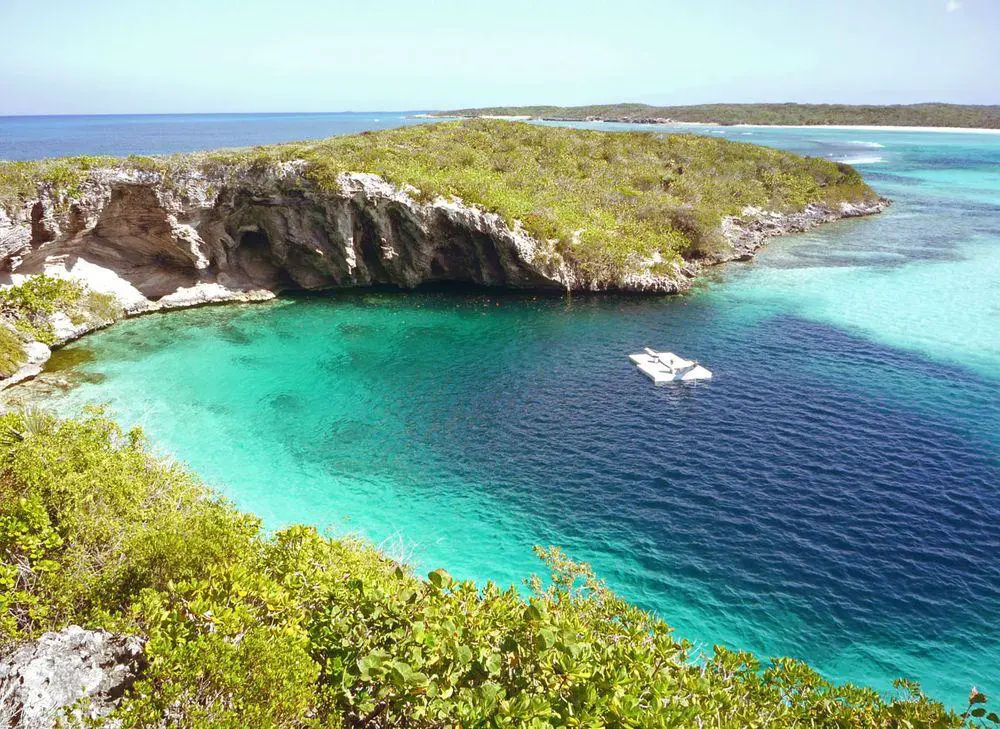
Wonders of the Bahamas
An interested visitor of the Bahamas will be rewarded with many unique monuments of nature and also several exciting cultural attractions. Islands are rich with legends including stories about unusual creatures looming in the wild forest and swamps.
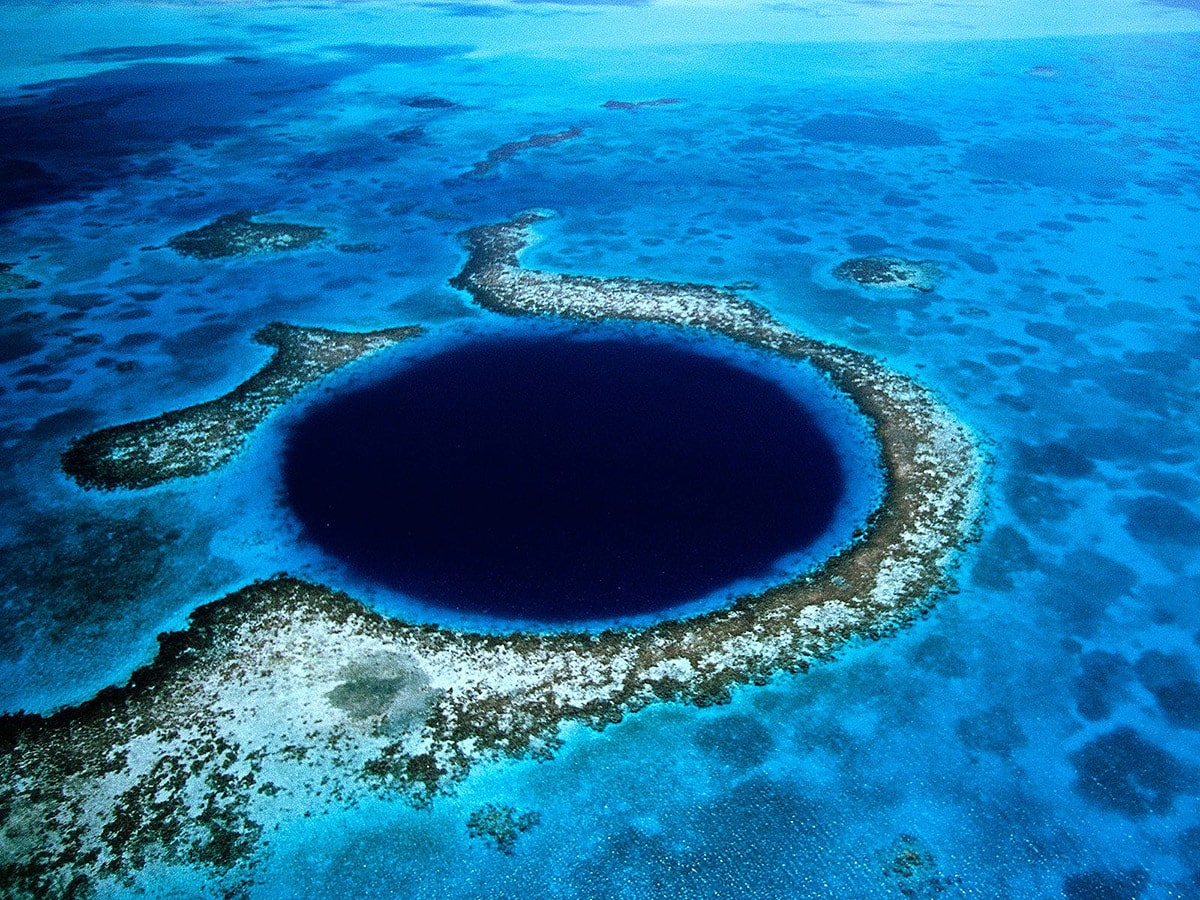
Sinkholes
This category includes outstanding sinkholes – large natural depressions or holes, which for most the part represent collapsed caves.
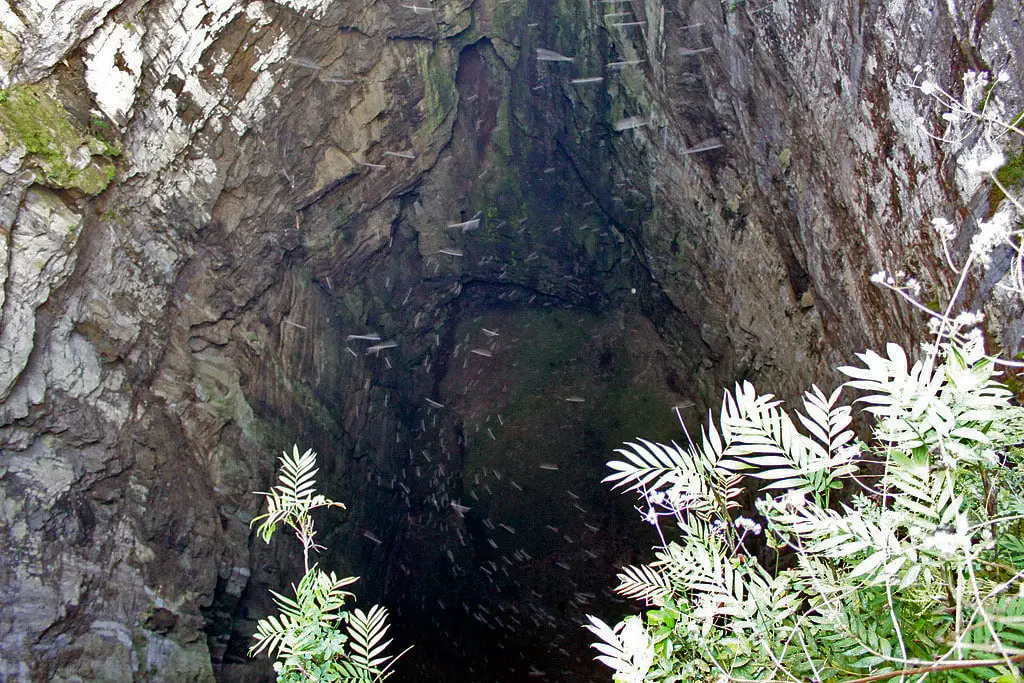
Largest and most impressive sinkholes of the world
A unique list of some of the world’s most impressive natural landmarks – giant sinkholes.
 Recommended books
Recommended books
Rock Formations and Unusual Geologic Structures
Looks at the earth’s crust, sedimentary strata, erosion, geologic mapping, fossil beds, folds and faults, volcanoes, and glaciers.
The Kantaberry Tales: A collection of Bahamian short stories
The twelve stories that comprise the Kantaberry Tales are about the people and events that have helped to identify this part of the Bahamas known as North Eleuthera as the most unique and diverse place within the country. From tales of shipwrecks and pirates, of child prodigies and teenage pregnancies, of Haitian voodoo and mail order brides, there’s a story here that will make you think, laugh or cry, but a story that you will remember and want to share with a friend.

